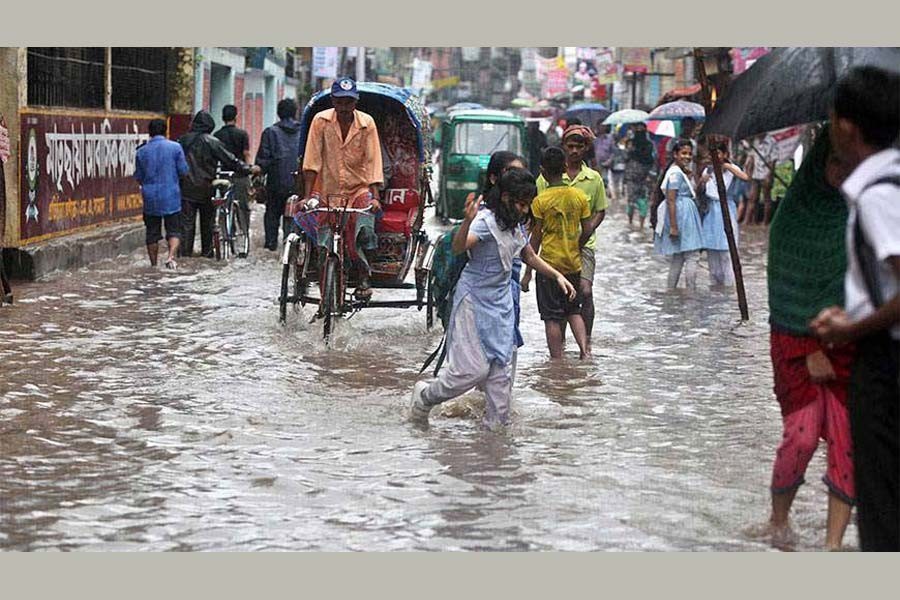The continuing tug-of-war between the Dhaka Water and Sewerage Authority (DWASA) and two city corporations, as reported in the FE on Saturday, over flushing stagnant water out of the capital during rains is a cause for serious concern. What is particularly embarrassing is that Dhaka city, where government headquarters are located, went under knee-deep rain waters thrice this year with no outlets for drainage of those. That the relevant agencies still wrangle over the jurisdiction of drainage should immediately seize the attention of the Prime Minister's Office as this issue can no more be left to whims and caprices of the DWASA Managing Director or the city mayors. And indeed it's a big surprise that the DWASA chief did not care to answer the reporter's queries even though several frantic attempts were made in this regard.
It is against this backdrop that the Dhakaites can no more have confidence in assurance of the Local Government, Rural Development and Cooperatives Minister that water-logging in the city will not recur next year as the government has learnt a lesson from this year. But the concerned agencies which are to remove this perennial problem of water-logging have failed to learn it, as evident from their squabbling. In fact, the capital city is likely to face a much worse flooding in future than this year's if canals and floodplains are not reclaimed soon. Powerful realtors have earth-filled the flood-flow zones and water retention areas, conservation of which was a major decision in the Detailed Area Plan (DAP) of Dhaka, adopted in 2010. The mayors of the two Dhaka city corporations have underscored the need for a designated body to coordinate activities among all the government agencies concerned to resolve the mammoth problem. Canals, which play the crucial role of storm sewerage, are grabbed by some powerful people and clogged with solid waste. It is not easy at all to reclaim canals from the grip of the influential quarters. The storm sewerage problem would not be solved unless rainwater can be carried to the rivers around the city.
It is a fact that the 2,000 km-long surface drains maintained by the city corporations mostly remain clogged with waste and construction materials, thanks to carelessness of people. More than a dozen government agencies are responsible for looking after the drainage system in the city. But in the absence of an umbrella organisation, no coordinated steps are taken. A coordinated body with political and bureaucratic authority would help solve the water-logging problem.
The lack of a coordinated drainage master plan has encouraged a kind of 'boundless mad rush' encroachment process, endangering water corridors and retention areas vital for the city's survival and resilience. In the absence of 'city government', two Dhaka City Corporations, the only elected body (out of 54 service providers under 11 ministries), can adopt the role of the lead agency and coordinator to initiate its comprehensive solution-based efforts. It is also important that they translate these efforts into reality by keeping 'inclusiveness' in mind and accommodating all the agencies.


